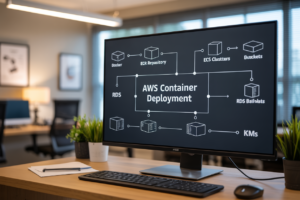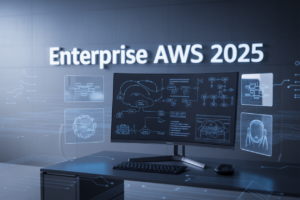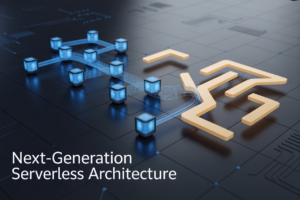Ever spent an entire sprint fighting with a Databricks cluster that just won’t behave? You’re not alone. Data teams everywhere are banging their heads against notebooks that crash, jobs that mysteriously fail, and costs that spiral out of control.
Databricks is powerful, but let’s be honest—it doesn’t always play nice right out of the box. The difference between a painful implementation and a smooth-running data platform often comes down to a few critical Databricks best practices that nobody bothered to tell you about.
In the next few minutes, I’ll share the exact configuration tweaks, architectural decisions, and workflow hacks that took our team from constant firefighting to actually delivering insights. And the secret sauce? It’s not what the documentation tells you to do.
Setting Up Your Databricks Environment for Success
A. Optimizing Cluster Configurations for Different Workloads
Got a data pipeline that’s crawling? You’re probably using the wrong cluster setup. Match your hardware to your workload – beefy CPU clusters for ETL jobs, GPU-powered setups for deep learning, and autoscaling for unpredictable workloads. Start small, monitor performance, then scale only what you need.
Data Engineering Best Practices
Designing Efficient ETL Pipelines with Delta Lake
Delta Lake transforms how you build ETL pipelines in Databricks. The ACID transactions mean no more corrupt data files, while time travel lets you roll back mistakes instantly. Stop wasting hours debugging messy pipelines – just set up Delta tables once and focus on delivering value instead of fixing broken jobs.
Machine Learning Development on Databricks
Machine Learning Development on Databricks
A. Leveraging MLflow for Experiment Tracking
MLflow on Databricks isn’t just nice-to-have—it’s a game changer. Track every model parameter, metric, and artifact without the headache of manual documentation. Want to compare 50 different model iterations? Done. Need to reproduce that winning model from three months ago? Easy. MLflow makes experiment tracking feel less like bookkeeping and more like actual data science.
B. Scaling Model Training with Distributed Computing
Train models in minutes instead of days by tapping into Databricks’ distributed computing magic. Spin up a cluster, distribute your workload across multiple nodes, and watch your training jobs fly. No more waiting around for that complex neural network to train on your laptop while it sounds like it’s preparing for takeoff. Scale up or down instantly based on your needs.
C. Implementing Feature Stores for Reusability
Feature engineering is that time-consuming task we all secretly hate redoing. Databricks Feature Store solves this by creating a central repository for your features. Build once, use everywhere. Your recommendation model needs user behavior features? They’re already computed, tested and ready to go. Your team will thank you when they stop duplicating work across projects.
D. Model Deployment and Serving Strategies
Getting models into production shouldn’t feel like pushing a boulder uphill. Databricks simplifies this with multiple serving options. Deploy to REST endpoints for real-time scoring, schedule batch predictions for efficiency, or integrate with your existing tools. The platform bridges the gap between your data scientists’ notebooks and actual business impact.
Collaborative Workflows for Data Teams
Collaborative Workflows for Data Teams
Version Control and CI/CD Integration
Git integration in Databricks elevates team collaboration. Connect repositories directly to workspaces, implement branch-based workflows, and automate testing through CI/CD pipelines. This approach catches errors early and maintains consistent code quality across your data projects.
Notebook Collaboration Techniques
Real-time co-editing transforms how teams work in Databricks notebooks. Multiple engineers can simultaneously edit, comment, and resolve issues without version conflicts. Try organizing complex workflows into smaller, focused notebooks that different team members can own and maintain.
Knowledge Sharing and Documentation Practices
Documentation shouldn’t be an afterthought. Embed markdown cells explaining the “why” behind key decisions. Create living documentation using Databricks Repos, maintain standard notebook templates, and schedule regular knowledge-sharing sessions where team members demonstrate solutions to common problems.
Cost Optimization and Resource Management
Cost Optimization and Resource Management
A. Implementing Autoscaling Strategies
Nothing burns cash faster than idle clusters sitting around doing nothing. Autoscaling is your financial savior here – it automatically adjusts worker nodes based on workload demands. Set minimum and maximum bounds that make sense for your workloads. Your future budget will thank you.
B. Managing Compute Costs with Job Scheduling
Smart scheduling slashes unnecessary compute costs. Schedule jobs during off-hours when possible, batch similar workloads together, and implement timeout policies for forgotten clusters. Many teams are shocked to discover they’re paying for compute that’s just collecting digital dust.
C. Storage Optimization Techniques
Databricks storage costs can creep up silently. Implement data lifecycle policies, archive stale data, and use Delta Lake’s vacuum operation regularly. Compress large datasets and drop unused columns. One client saved 40% on storage just by implementing basic housekeeping practices.
D. Budget Monitoring and Alerting Systems
Flying blind with Databricks costs is a recipe for budget overruns. Set up cost monitoring dashboards and configure alerts when spending approaches thresholds. The transparency forces accountability across teams and prevents that dreaded end-of-month sticker shock.
E. Right-sizing Clusters for Different Workloads
One size definitely doesn’t fit all. Configure smaller clusters for development, medium-sized for testing, and robust clusters for production. Match instance types to workload characteristics—memory-optimized for ML, compute-optimized for ETL. Stop throwing hardware at performance problems.
Security and Governance
Security and Governance
A. Implementing End-to-End Encryption
Data security isn’t optional anymore. Databricks shines with its robust encryption capabilities that protect your data both in transit and at rest. Configure TLS for all communications and leverage workspace-level encryption keys to keep sensitive information locked down tight. Trust me, your compliance team will thank you later.
B. Data Lineage and Cataloging
Know where your data comes from and where it’s going. Databricks Unity Catalog gives you that crystal-clear visibility into data lineage that modern governance demands. Tag everything, document metadata religiously, and watch how quickly your team can trace data flows when auditors come knocking. No more data detective work!
C. Compliance and Audit Logging
Auditors breathing down your neck? Enable comprehensive audit logging across your Databricks workspace. Track who accessed what, when, and how. Set up automated reporting that flags unusual access patterns before they become problems. The best compliance strategy is the one that prevents violations before they happen.
D. Sensitive Data Handling
PII data requires special treatment. Implement dynamic data masking for sensitive fields, use column-level access controls, and leverage Databricks’ integration with third-party tokenization services. Remember: the most secure data is the data you don’t store in the first place. Minimize sensitive data collection whenever possible.
Mastering Databricks requires attention to detail across multiple domains—from proper environment setup to efficient data engineering workflows, ML development best practices, and collaborative team processes. By implementing the cost optimization strategies and security governance frameworks outlined in this guide, your organization can maximize the value of its Databricks investment while maintaining data integrity.
We encourage you to start implementing these best practices incrementally within your data teams. Begin with the fundamentals of environment configuration, then gradually incorporate the more advanced recommendations for engineering, machine learning, and team collaboration. Remember that excellence in Databricks usage is a journey, not a destination—continuously refine your approach as your team’s needs evolve and as the platform introduces new capabilities.




















